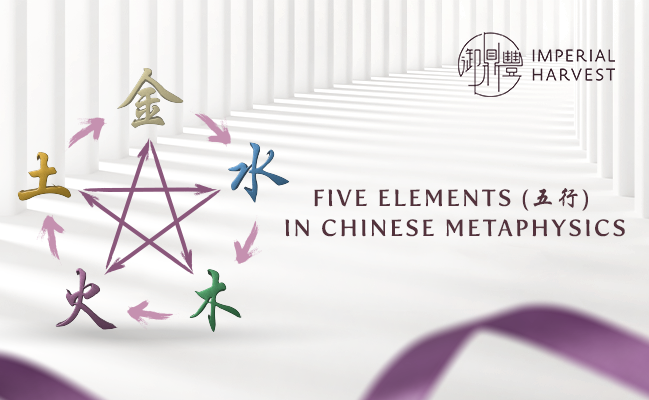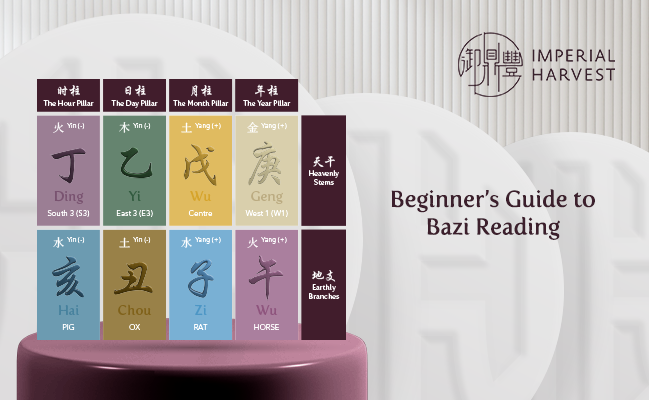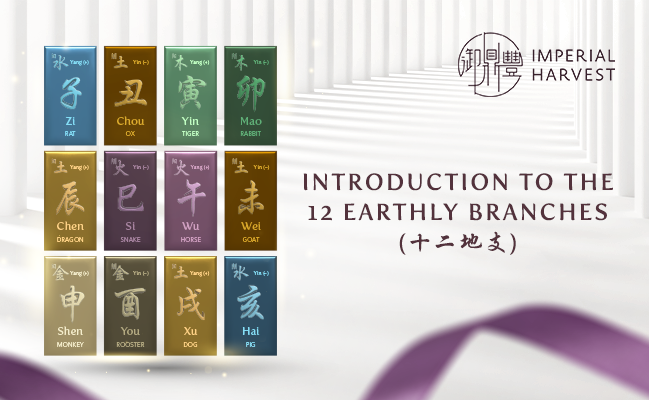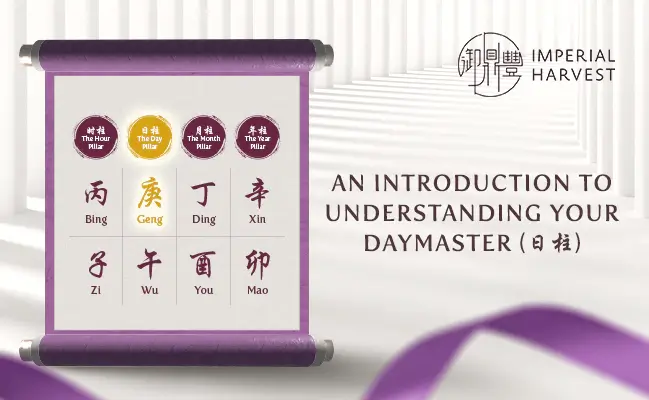

Posted by Imperial Harvest on 03 November 2023
The 60 Jia Zi (甲子) Explained
Estimated Reading Time: 4 mins
The 60 Jia Zi is also known as the Sexagenary Cycle, the Stem-Branch Cycle or Gan Zhi (干支). It is a 60-year calendar cycle based on the combinations between the 10 Heavenly Stems and 12 Earthly Branches in Chinese metaphysics.
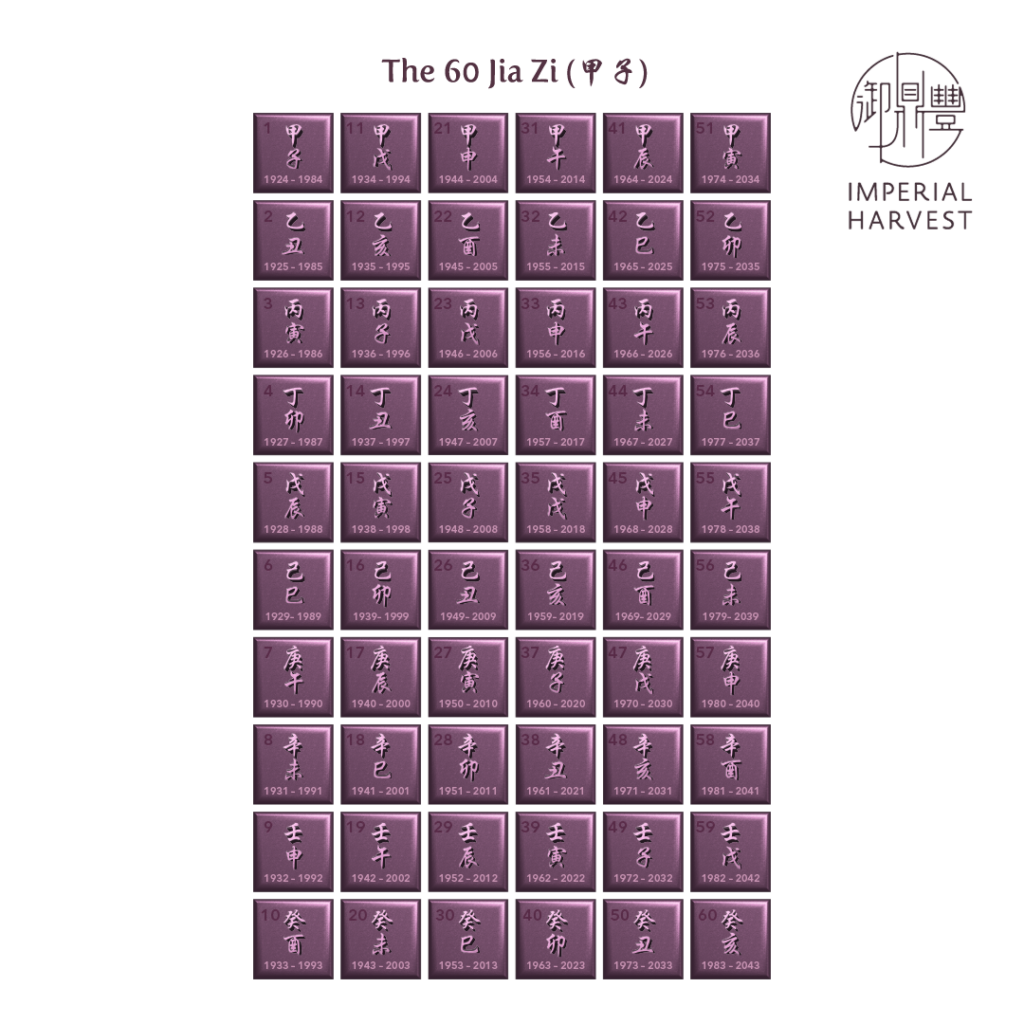
In this system of measurement, each year is named by a pair of a Heavenly Stem and an Earthly Branch, beginning with the year of Jia Zi — a combination of Jia (甲) from the Heavenly Stems, and Zi (子) from the Earthly Branches.
Historic Significance of the 60 Jia Zi
The sexagenary calendar system has historical significance in timekeeping within China and the broader East Asian cultural context. Its earliest documented use for recording days dates back to the Shang oracle bones from the late second millennium BC. The practice of using this system to record years began in the mid-3rd century BC.
This calendar system served multiple purposes:
- Recording Time: Traditionally, the Sexagenary Cycle has been used to describe and record specific years, much like how we use decades, centuries, and millennia to represent years. Each year in the cycle is characterised by a unique combination of a Heavenly Stem and an Earthly Branch, providing a systematic way of keeping track of time.
- Chronology: In Chinese historical records, some events are dated using the Sexagenary Cycle, making it an indispensable tool for historians and scholars when establishing chronological order.
- Destiny Analysis: In Chinese astrology, the year, month, date, and time of birth are each represented by a specific combination from the Sexagenary Cycle. This forms the basis for Bazi — a foundational building block of Imperial Feng Shui — used to predict or reflect on an individual’s character, influences and potential life trajectory.
- Agriculture: The cycle has historically played a vital role in agricultural planning. It helped farmers determine the correct times for planting, harvesting, and other agricultural activities based on the specific characteristics associated with each year in the cycle.
- Cultural Significance: Beyond its practical applications, the Sexagenary Cycle holds cultural and symbolic significance in East Asian cultures. It influenced art, literature, and philosophy, reflecting the deep-rooted connection between the cycle and the cultural fabric of the region.
Applications of the 60 Jia Zi
In the 60 Jia Zi system, the combination of Heavenly Stems and Earthly Branches follows a pattern of the same polarity pairing. In this context, Yin is paired with a Yin element, and Yang is paired with Yang. This practice was designed to ensure compatibility, while simultaneously preventing possible conflicts arising from pairing Yin with Yang elements.
This method of pairing resonates throughout the system. Once the ten Heavenly Stems have been matched with the twelve Earthly Branches, a distinct cycle known as “Xun” (旬) is established, which measures a decade according to the 60 Jia Zi system. This process results in six notable subsets: Jia Zi (甲子), Jia Yin (甲寅), Jia Chen (甲辰), Jia Wu (甲午), Jia Shen (甲申), and Jia Xu (甲戌), which serve to further structure and categorise the cycle.
To illustrate this concept, let’s examine the Jia Zi Decade. By pairing the first Yang Heavenly Stem, “Jia” (甲) with the first Yang Earthly Branch, “Zi” (子), creating the combination “Jia Zi” (甲子). Subsequently, we continue pairing the following Heavenly Stems with the Earthly Branches in the order listed below:
- Jia Zi (甲子)
- Yi Chou (乙丑)
- Bing Yin (丙寅)
- Ding Mao (丁卯)
- Wu Chen (戊辰)
- Ji Si (己巳)
- Geng Wu (庚午)
- Xin Wei (辛未)
- Ren Shen (壬申)
- Gui You (癸酉)
Across the 60 Jia Zi, two Earthly Branches, Xu (戌) and Hai (亥), remain unpaired in the Jia Zi Decade — demonstrating the concept of “Emptiness and Void” or Kong Wang (空亡). This concept refers to the two Earthly Branches that are unpaired in each decade, leading their energy to appear diminished.
In the context of Bazi, the Emptiness and Void concept is viewed as “Shen Sha” (神煞), signifying influences in a Bazi chart that may represent both auspicious and inauspicious aspects.
Application of Emptiness and Void in Chinese Metaphysics
The concept of Emptiness and Void finds application in various fields, including Qimen Dunjia, Imperial Feng Shui and Bazi.
In Qimen Dunjia
In Qimen Dunjia, if the outcome sector is paired with Emptiness and Void, it signifies that no meaningful outcome can be derived or observed from that sector. In such cases, an Imperial Feng Shui practitioner would need to employ the Shifting Palace technique, which involves applying the principles of Early Heaven and Later Heaven Ba Gua. This technique helps identify an alternative outcome sector that can provide relevant insights or guidance.
In Bazi
The concept of Emptiness and Void is expressed as “DE” in a Bazi chart, referring to a sense of emptiness, fear and under-achievement. The presence of DE in a Bazi chart may indicate that an individual may experience a lack of direction in life. Hence, knowing the implications of DE in Bazi charts would help us be cognizant of emotional pitfalls and be mindful of unproductive emotional states. DE does not appear in the Day Pillar.
The Year pillar signifies the period of youth, spanning from 1 to 20 years of age. When the DE appears in this pillar, it may suggest that the individual led a relatively solitary life during their early years and had limited contact with grandparents. It could also indicate a lack of close friendships during this period. However, on a positive note, the presence of the DE in the Year pillar suggests that this person had ample opportunities for self-discovery and exposure to diverse experiences.
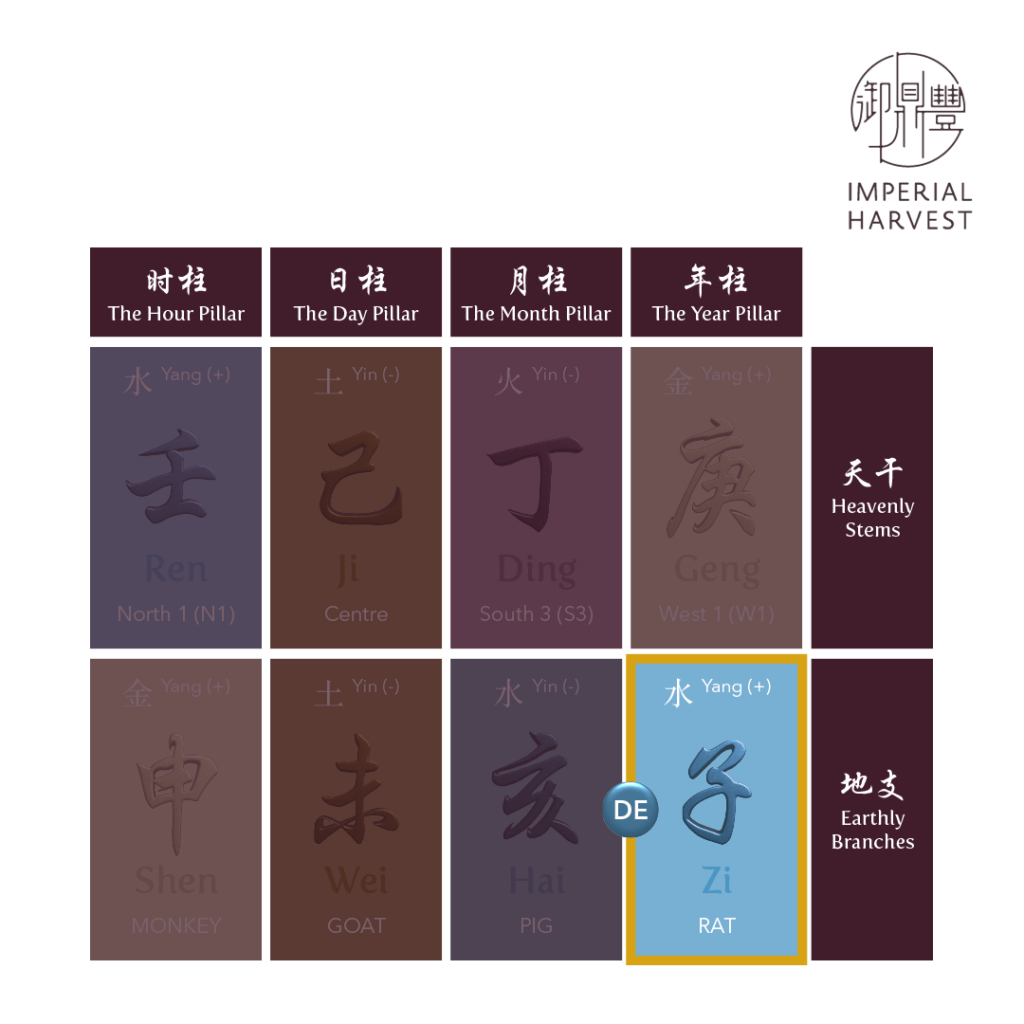
The Month Pillar represents an individual’s career and relationship with their parents, according to the study of Bazi. When DE appears in the Month Pillar, the individual may experience a sense of unfulfillment in their professional life, even when they are performing well. This void may indicate a lack of deep satisfaction or personal fulfilment in their chosen career path, despite apparent success.

If the DE appears in the Hour Pillar of the Bazi chart, it may suggest challenges related to having children, or difficulties in establishing a close connection with them. Additionally, it may point to issues within the management of staff, employees, or colleagues — indicating potential conflicts or challenges in interpersonal relationships.
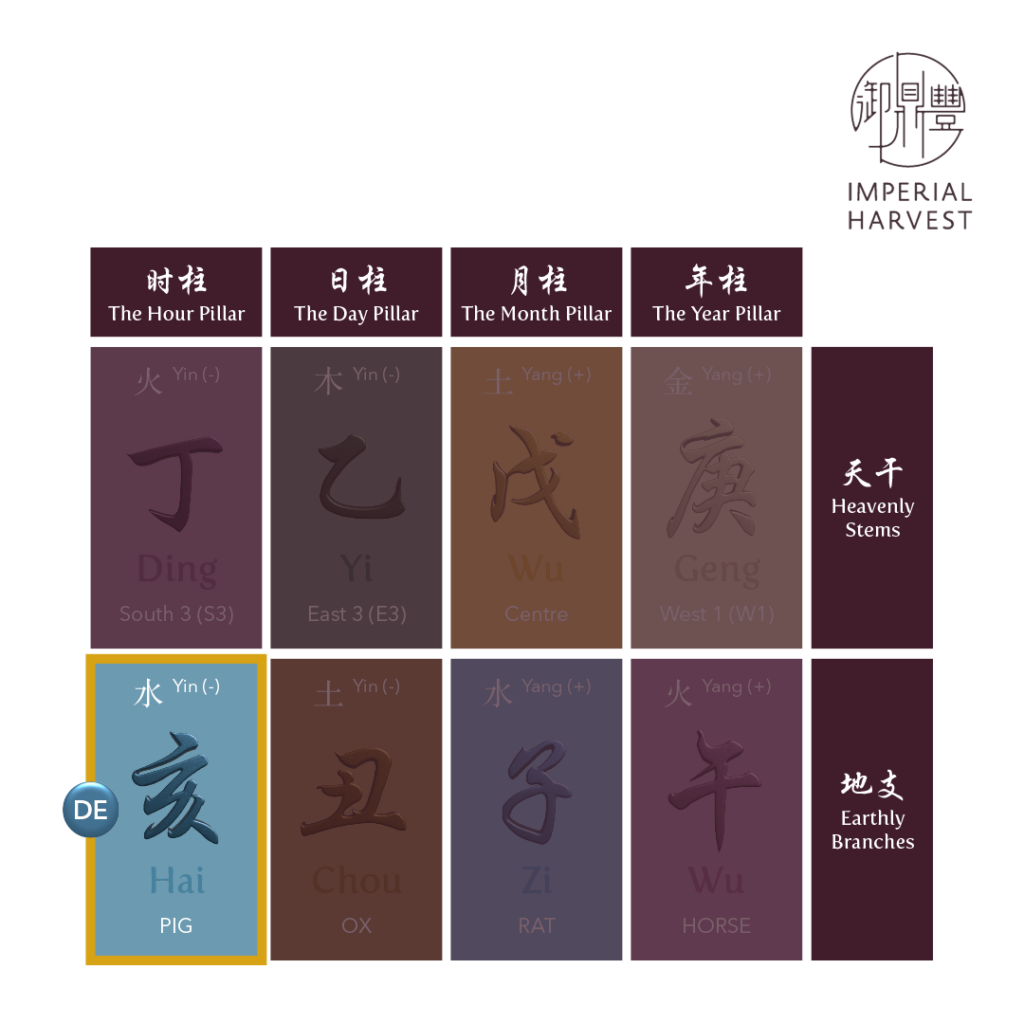
Imperial Harvest’s expert consultants are always on hand to guide you on your journey and provide you with insights to help you realise your fullest potential. Book a complimentary consultation today or contact us at +65 92301640.
We are located at
For prospective clients:Imperial Harvest402 Orchard Road
Delfi Orchard #02-07/08
Singapore 238876 For existing clients:Imperial Harvest Prestige
402 Orchard Road
Delfi Orchard #03-24/25
Singapore 238876
Most Read Articles
Get to read our life changing articles and get inspired.
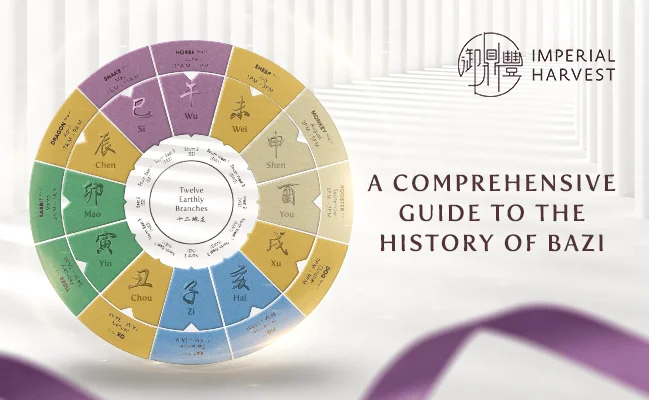
A Comprehensive Guide to the History of Bazi (八字)
Estimated Reading Time: 5 mins Bazi (八字) is often mistakenly assumed as the Chinese counterpart of western Astrology. The similarities between both systems lie in their utilisation of birth dates and time in their calculations, and the ability to be read from a tabulated chart. Where Astrology may take into account the positions of different […]

Imperial Harvest Consecration Ceremony
Estimated Reading Time: 5 mins At Imperial Harvest, each earthly treasure undergoes a series of consecration rites performed by Master David, before it is bestowed upon its blessed owner. Every aspect of these sacred Chinese anointing rituals is carefully examined and accurately represented in Master David’s blessings, reflecting Imperial Harvest’s deep respect for these esteemed […]

The Importance of Mountain and Water Stars
Estimated Reading Time: 4 mins “山管人丁,水管财”, is a well-cited principle in the study of Imperial Feng Shui that translates to “Mountains govern benefactors, authority and harmony, while Water governs wealth, opportunities and intuition”. This principle reiterates a critical factor in Imperial Feng Shui — balance is the key to achieving success in life. As mountain […]
